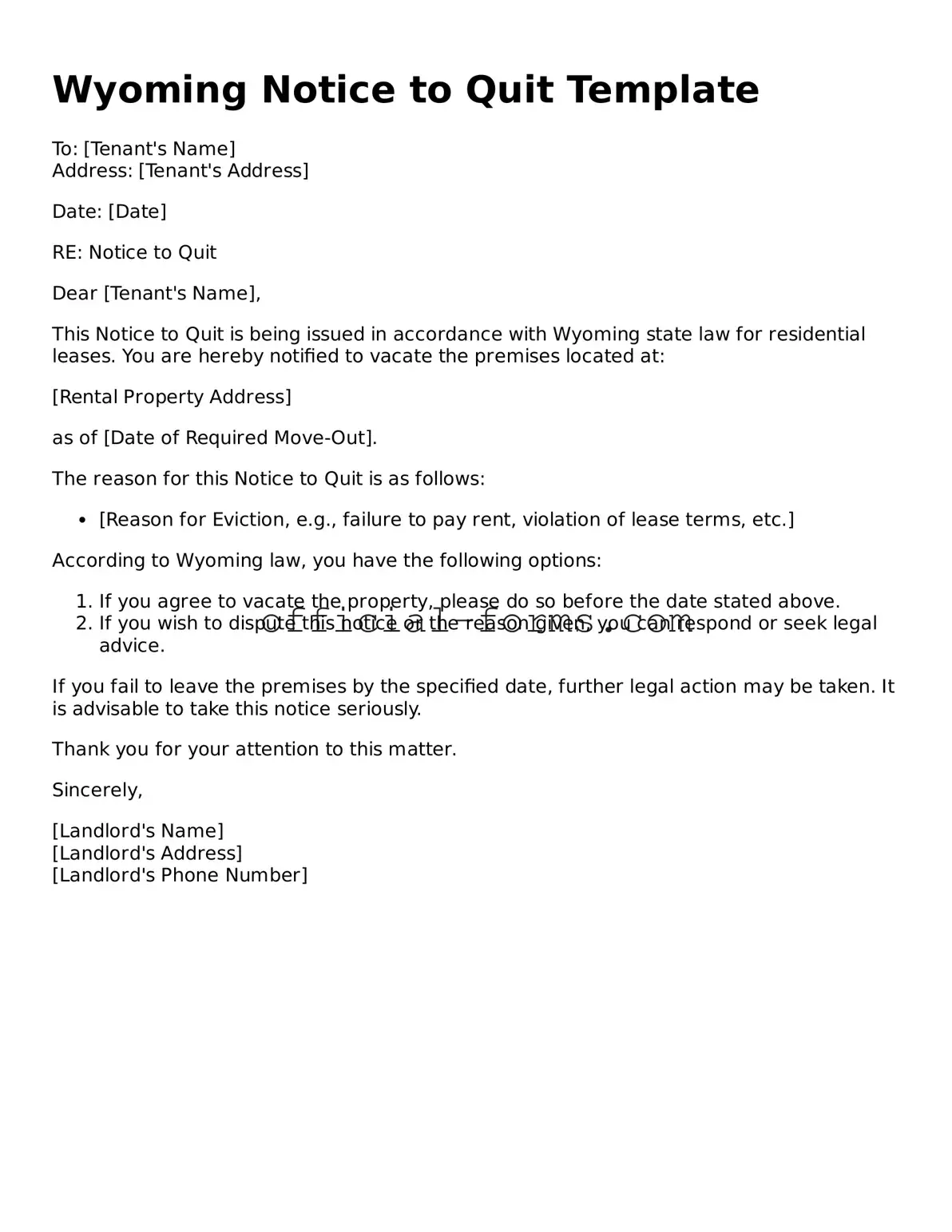Filling out the Wyoming Notice to Quit form can be straightforward, but many make common mistakes that can lead to complications. One frequent error is failing to provide accurate tenant information. It's crucial to include the correct names and addresses of all tenants involved. Missing or incorrect details can cause delays in the eviction process.
Another mistake is neglecting to specify the reason for the notice. The form requires a clear explanation of why the notice is being issued. If this section is left blank or is vague, it may weaken the case and lead to disputes later on.
Many individuals also overlook the importance of including the date. The notice must clearly state when it was issued. Without a date, the notice may not be considered valid, which could prolong the eviction process.
Some people mistakenly assume that a verbal agreement is sufficient. It's essential to document everything in writing. Relying on verbal communications can lead to misunderstandings and disputes.
Another common error is not providing the correct amount of notice. Wyoming law requires specific notice periods depending on the reason for eviction. Failing to adhere to these timelines can invalidate the notice.
In addition, individuals often forget to sign the form. A signature is necessary to validate the notice. An unsigned form may be deemed ineffective, causing further delays in the eviction process.
It's also important to remember that the form must be delivered properly. Many make the mistake of not following the correct delivery methods. Ensure that the notice is served according to state laws to avoid complications.
Some individuals fail to keep a copy of the Notice to Quit. It's vital to retain a copy for your records. This can be crucial if disputes arise or if the case goes to court.
Lastly, people sometimes do not seek legal advice when needed. Consulting with a legal professional can help clarify any uncertainties and ensure that the form is filled out correctly. Taking this step can save time and prevent potential legal issues down the line.
